Mediamax presents the next hero of its "50 Global Armenians" special project, Karen Martirosyan, Associate Professor of the Department of Physics and Astronomy and Head of the Advanced Nanoscience Laboratory in University of Texas at Brownsville.
Karen Martirosyan was born in a family of scientists in Yerevan. He graduated from the Department of Cybernetics of State Engineering University of Armenia in Yerevan and worked over his dissertation in the Institute of Structural Macrokinetics in Chernogolovka (Moscow region) which he defended in 1991.
In 1993-2001, he lived and worked in Moscow. In 2001, he was invited to University of Houston and moved to the United State with family. He is currently Associate Professor in the Department of Physics and Astronomy in University of Texas at Brownsville and also head of the Advanced Nanoscience Laboratory. He published over 150 scientific papers and patents and is also a member of editorial boards of several scientific journals specialized in nanotechnology and nanomedicine.
I was greatly influenced by the scientific environment I grew up: my father and uncle were University professors and our house was full of their friends and colleagues from scientific collaborations. I was interested in many things. As a child, I was interested on modeling of remote controlled airplanes, ham radio circuit design, chemistry and physics, also soldering, structuring transmitters and radio sets. I took part in many airplanes modeling contests even winning some awards and later I taught airplanes modeling to high school students. I also took interest in medicine which came from my mother who was a neuropathologist. In the 10th grade, my father, who was my Principal Teacher in my life, forced me to solve ten physics and ten mathematics problems on a daily basis that left a stable foundation for my further development and scientific background. 
With father, after defending the PhD.
Photo: from K. Martirosyan's private archive.
In 1979, College of Cybernetics opened in the State Engineering University and I was admitted to study in the department of semiconductor and microelectronic devices. Professor Senik Mkrtchyan was Chair of the department at that time and he later became one of my supervisors. As I was also interested in medicine I wanted to compensate the interest somehow. So, simultaneously with studying in the State Engineering University, I graduated from the 2-year medical cybernetics program in the Social Sciences Department. I also took training in the Institute of Experimental Biology which deeply enriched my knowledge in the fields of biology and medicine.
Later I was admitted in graduate program and became a PhD student at the same State Engineering University. I worked in a group supervised by Petros Avakyan who had established scientific connections with the Institute of Structural Macrokinetics of National Academy of Sciences (ISMAN) in Chernogolovka, Moscow region. Over those years, in fact I had to live in-between Yerevan and Moscow as I conducted intensive research in the ISMAN. Finally, after 2.5 years, I successfully defended my dissertation thesis. At that time, ISMAN was founded and headed by Alexander Merzhanov who worked as a scientific supervisor there till the end of his life (academician Merzhanov passed away in July 2013 - ed.). He was the pioneer of the International Symposium dedicated to the Self-Propagating High-temperature Synthesis (SHS). The Symposium is held once in 2 years and the 10th anniversary was held in Armenia in 2009.
This year I was the Chair of the Organizing Committee of the Symposium which held on South Padre Island in the U.S. 21-24October. 5-6 scholars from Armenia participated in the symposium.
Participants of the jubilee SHS International Symposium in Sevan (academician Merzhanov is in the center).
Photo: from K. Martirosyan's private archive.
After defending the dissertation, I worked as lecturer in the State Engineering University for several years. It was early 90-s, the hardest time for the country. At that time, I already had interesting scientific ideas for developing highly efficient filtering devices and high-temperature refractory materials using raw materials from Armenia (bentonite, zeolite and basalt fibers etc.) which we introduced into a small scale production.
Unfortunately, scientific research was also strongly affected at that time and when blackouts started soon I had to give up all the research and works. It's sad for me to recall how my father selflessly tried to support the operation of his lab in Yerevan State University of Architecture and Construction (later the lab has been named in his honor).
I already had a family, child and I wanted to continue research and not just survive. In 1993, I moved to Moscow with my family where I entered to the secondary doctoral program. However, over those years, I had to start a computer business in Moscow, as scientific work didn't provide normal salary. Nevertheless, I still wrote articles, published them and accumulated valuable ideas. As a result, upon the recommendation of Professor Mikael Nersesyan, I got an invitation to work at the University of Houston. So, I moved to the United States with family in July 2001.
This opens an excellent opportunity in the U.S. to help realize my research ideas, learn new scientific tools, instruments and novel scientific methods. I had to start many things from the beginning - reach scientific authority, set up a basis and learn to understand US universities organizational structure and research funding opportunities.
With Roald Sagdeev.
Photo: from K. Martirosyan's private archive.
Karen currently works at the Department of Physics and Astronomy in University of Texas at Brownsville, and he is head of the Advanced Nanoscience laboratory and manages several scientific projects.
Now my scientific interest is mostly linked to study of nanostructural materials, production of energy through environmentally friendly technologies as well as bio-nanotechnologies. I also manage to realize my interest in medicine. Jointly with UT MD Anderson Cancer Center in Houston, one of the world's leading institutes in field of cancer study and treatment, we develop novel medical devices which may be used for accurate treatment of cancer cells and their subsequent destruction by radiation or heat.
My group also elaborate nano-energy materials sponsored by Air Force Research Lab. Three times I was awarded prestigious Air Force Summer Faculty Fellowships and worked in Eglin-AF base in Florida.
Our lab is also engaged in creating, producing and characterizing novel materials. Recently, I granted about half-million dollar fund by National Scientific Foundation for acquisition of cryogenic free physical property measurement system. We have the highly innovative modern instrumentation in the lab. Our work based on cryogenic measurement having no analogues in the world - we are examining magnetic, thermal and electrical behavior of nanostructured materials at low-temperature from 1.9 Kelvin (near absolute zero) under strong magnetic field up to 9 Tesla. All these are very complex and expensive systems. 
In lab with students.
Photo from K. Martirosyan’s private archive.
I often travel around the world to present scientific seminars, reports, lectures and workshops. This year proved to be very busy for me as I led to organize two major conferences.
I have many students working at our university, and I do my best to recruit students from Armenia as well. At present, in my group I have graduate student from Yerevan, who is earning his doctorate degree under my supervision.
I spend over half of my time on teaching. Along with other professors, we have established Nanoscience Concentration Program in our University. It’s a nanotechnology certificate education program with seven classes. We are integrating these courses on selective basis – there is a separate program for math, physicists, biologists, engineers and so on. So it’s rather a flexible system; the student chooses their interested subjects. This program doesn’t undertake additional credit hours, and that is the advantage of this program; in addition to their diploma, students are granted our nanoscience certificate. The program functions effectively, and students are happy with it.
When I was still taking my first steps, the research studies were more important for me than teaching. Later on, I realize that teaching a good specialist is an important and difficult task, and as well as important as a research, so, that is why currently my effort is divided with teaching and research.
Karen is married and has two daughters. Younger daughter Alisa studies in the 7th grade. Margarita, the older daughter, has finished studies at New York University (NYU) Tisch School of the Arts and presently lives and works in Los Angeles. Margarita is co-founder and lead singer of “The Edges of Paradise” metal-band.
With family.
Photo from K. Martirosyan’s private archive.
Karen also keeps in close touch with the scientific circles in Armenia.
I believe Armenia needs to establish scientific relations with other countries in a more dynamic way. Selected students should be sent abroad to study; for example, it will be a good to adopt Kazakhstan's experience in this effort. But also, proper conditions should be provided, so that they express willingness to return and work in their homeland. To give an example, I have been collaborating with Professor Suren Kharatyan of Yerevan Chemical Institute for a long time now, and this cooperation gives an opportunity to Armenian students to come and study at our university.
I clearly remember the Soviet Union period during which my father and uncle, being professors, had restriction to present their research abroad, so, this factor was formed a huge barriers. First, their works were not known in the world, and second, it was language barrier. The Soviet journal’s articles were being translated into English, however, the translation was far from ideal, and therefore western scientists were not adequately informed with their works. Scientists presently working in Armenia need to be aware of what’s going on in their research area globally, and need to be aware about the latest inventions and achievements.
Armenia needs to be more open to the world and try to develop effective mechanisms, which will enable Armenian scientists overseas to serve as a connecting-link between Armenia and the outer world. Several measures should be taken. For example, Armenian Medical World Congress was held in California in 2013, and if I am not mistaken, a similar symposium will be held in Yerevan next year. I think, such kind of projects should be supported at the state level. Moreover, emphasis should be primarily put on scientists from Armenia, and not from the Diaspora.
The main pledge for future success is the young generation. Some effort should be spared to keep the young generation to stay in Armenia and consider dedication to science as a prestige career pathway.
The state programs should support post-graduate students, so, talented and best students should have the post-graduate opportunity to increase their knowledge and specialist competencies. Due to modern technologies, efficient communication and broad collaboration currently the science advances exponentially, and it is highly important don’t left behind.
The government should realize that the missed time might have a negative impact on future country development.
Aram Araratyan talked to Karen Martirosyan.







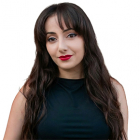
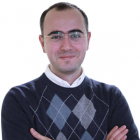
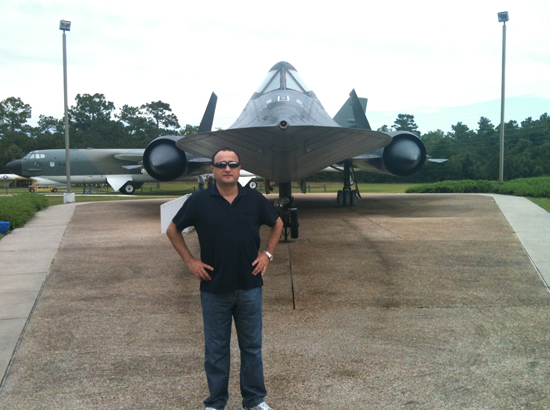
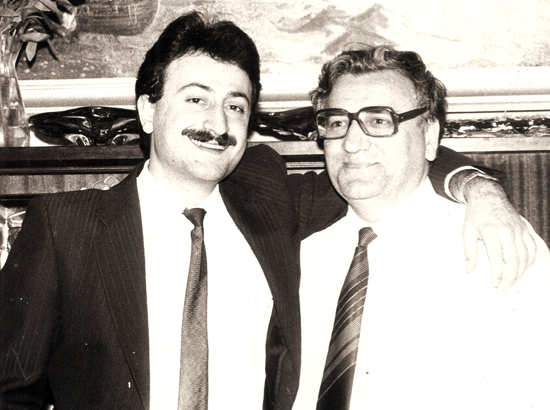
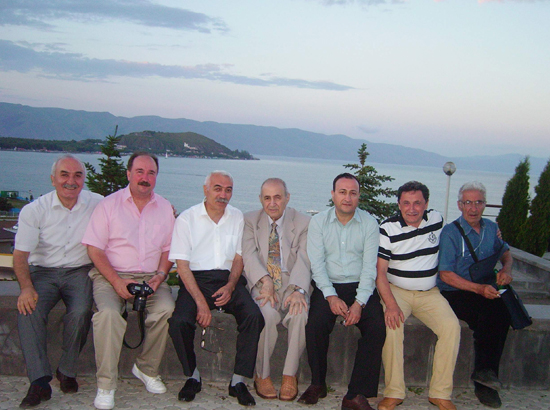










Comments
Dear visitors, You can place your opinion on the material using your Facebook account. Please, be polite and follow our simple rules: you are not allowed to make off - topic comments, place advertisements, use abusive and filthy language. The editorial staff reserves the right to moderate and delete comments in case of breach of the rules.